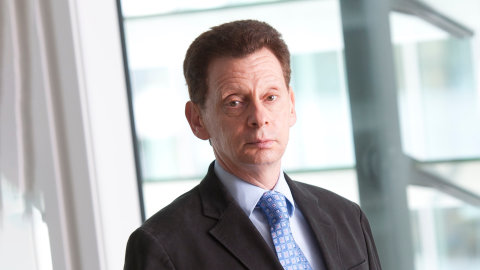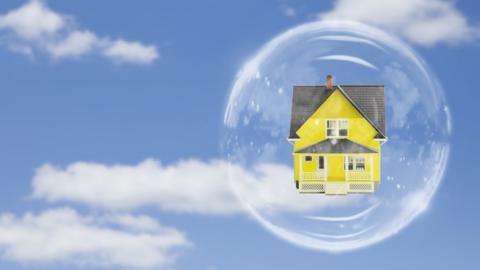With each new U.S. president an asset market bubble is born, or so it seems from a study of contemporary economic history. Yet the victor on Nov. 8 will be the first new president since George H.W. Bush in January 1989 to take office when the bubble created by the outgoing president is still almost fully expanded. Here's what that could mean for either Hillary Clinton or Donald Trump.
At the start of a Hillary Clinton presidency, the Federal Reserve is likely to take some token steps toward monetary normalization that it has postponed repeatedly during the long run-up to the election. That is if its leading officials (all appointed by President Obama) do not believe in secret that the point of no return has already been reached. The point of no return, as originally discussed by Milton Friedman in "A Monetary History of the United States," is where monetary tightening may actually worsen the inevitable end-stage of the asset-price inflation, rather than allowing it to emerge naturally through over-investment, mal-investment and falling profits.
By contrast, in the aftermath of a surprise Trump victory, both Federal Reserve Board Chair Janet Yellen and Fed Vice-Chair Stanley Fischer might be more concerned about their bag-packing plans than the niceties of cajoling the president-elect to approve their plans for the Trump Fed policy agenda. Time will tell whether a Trump Fed, moving more deliberately to normalize, had inadvertently already passed the point of no return. It is possible that a Trump Fed would agree with the Republicans in Congress who advocate that the aim should be stable prices rather than perpetual 2% inflation.
Recent speeches by Yellen and Fischer assert there is no price bubble to begin with. Pointedly, Fischer said there is no evidence at all of financial instability. Meanwhile, Yellen would like to see the economy overheat for a while to allow investment spending to pick up, and discouraged the idea of workers being pulled back into the labor force. Neither Yellen nor Fischer seem to be concerned that there is already overheating — if asset markets are included in the analysis.
Of course, the history and current composition of the Fed don't inspire confidence in its ability to spot bubbles. In particular, Fischer has progressed through top positions in a sequence of institutions notorious for their lack of diagnostic skill with respect to past asset-price inflations. In any case, some cynics might say that both Yellen and Fischer, despite their public statements, recognize that dangerous asset-price inflation may already have taken hold. Yet they remain mute or ostensibly in denial, realizing that any hint by them of this would give credence to the Trump campaign, which has taken aim against their bubble-making.
The financial markets, especially currency and interest rate futures, are assuming that this denial will not last beyond Election Day. They see the Fed in its last days under Obama and the early days under Clinton embarking on a monetary normalization, though it is doubtful whether Yellen, or Clinton's economic advisers, have any real concept of what this means. A 25-basis-point rate hike is in itself a triviality and diversion. Real normalization would start with shrinking the monetary base and allowing market forces fuller leeway in the determination of rates.
The timing of the end-phase of the present asset-price inflation is indeed largely unpredictable, though highly likely within a two-year time span. Under a Clinton administration, could the Fed respond with an even more radical monetary experiment than its predecessor in the hope of starting a new episode of asset-price inflation similar, to or even more virulent, than its predecessor through 2010-2016?
This American political cycle would work against this outcome. A recession and crash in 2017 or 2018 could mean a landslide defeat for the Democrats in 2018, bringing back into play a powerful anti-Fed coalition in Congress. More fundamentally, there is the question of whether conditions would be ripe for the combination of speculative storytelling and hunt for yield to take off and empower new asset-price inflation so early following a devastating end to the previous episode. Markets would be understandably skeptical of any new narrative about the power of unconventional tools at the Fed to stimulate prosperity so soon after the last experiment ended in failure.
The one or two presidents who experienced the end phase of asset-price inflation early in their new terms did not turn to the radical monetary experimentation which might succeed in recreating asset-price inflation in a still-weak economic environment However, Herbert Hoover's successor, Franklin Roosevelt, did just that from 1934 through roughly 1937.
Perhaps an economic miracle (such as a surge in productivity and investment led most likely by another technological revolution) could save Hillary Clinton's administration from monetary failure, just like the last miracle worked wonders for Bill Clinton's administration. By being too slow to raise rates, the Fed could turn a miracle into an asset-price bubble. In that way, the historical pattern of new presidents authoring their own episode of asset-price inflation would remain intact.
The pattern stretches all the way back to the great asset-price inflation of 1962-1968 under John F. Kennedy and Lyndon Johnson's presidencies. Presidents Richard Nixon (1971-1973), Ronald Reagan (1986-1990), Bill Clinton (1995-2000), George W. Bush (2003-2007) and Barack Obama (2010-present) all saw periods of asset-price inflation. The Jimmy Carter and George H.W. Bush administrations were exceptions to the pattern.
So an obvious question to ask in the twilight days of the current administration and its Federal Reserve is: will the pattern continue? The short answer is probably not this time.
















